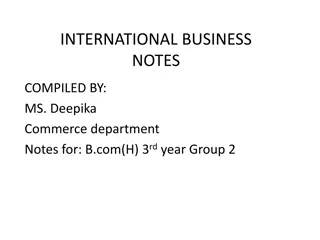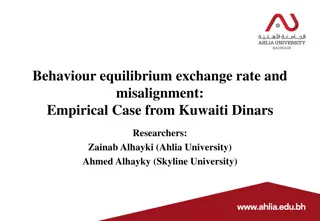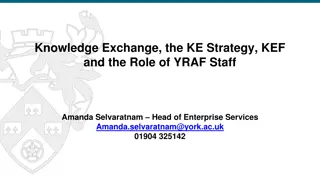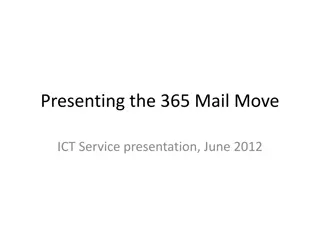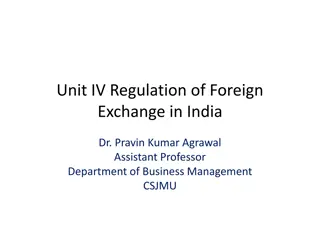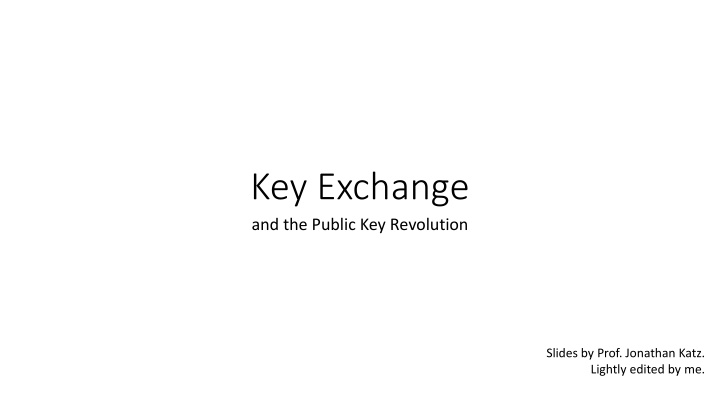
Revolution in Key Exchange and Public Key Security
Explore the evolution from private-key cryptography's limitations to the revolutionary concepts of key distribution, management, and exchange in secure communication. Discover how asymmetry in cryptographic problems enables the establishment of shared secret keys via public discussion, enhancing security against eavesdroppers and potential vulnerabilities.
Download Presentation

Please find below an Image/Link to download the presentation.
The content on the website is provided AS IS for your information and personal use only. It may not be sold, licensed, or shared on other websites without obtaining consent from the author. If you encounter any issues during the download, it is possible that the publisher has removed the file from their server.
You are allowed to download the files provided on this website for personal or commercial use, subject to the condition that they are used lawfully. All files are the property of their respective owners.
The content on the website is provided AS IS for your information and personal use only. It may not be sold, licensed, or shared on other websites without obtaining consent from the author.
E N D
Presentation Transcript
Key Exchange and the Public Key Revolution Slides by Prof. Jonathan Katz. Lightly edited by me.
Private-key cryptography Private-key cryptography allows two users who share a secret key to establish a secure channel The need to share a secret key has several drawbacks
The key-distribution problem How do users share a key in the first place? Need to share the key using a secure channel This problem can be solved in some settings E.g., physical proximity, trusted courier, Note: this does not make private-key cryptography useless! Can be difficult, expensive, or impossible to solve in other settings
The key-management problem Imagine an organization with N employees, where each pair of employees might need to communicate securely Solution using private-key cryptography: Each user shares a key with all other users Each user must store/manage N-1 secret keys! O(N2) keys overall!
Key Distribution Centers Drawbacks: Single point of failure. For liveness. Could duplicate, but For security! Internal and external. Cannot support open systems . What if Alice and Bob do not work for the same entity, or trust the same person? E.g. sending credit card information to a merchant.
Classical cryptography offers no solution to these problems!
New directions Main ideas: Some problems exhibit asymmetry easy to compute, but hard to invert (factoring, RSA, group exponentiation, ) Use this asymmetry to enable two parties to agree on a shared secret key via public discussion(!) Key exchange
Key exchange Enck(m) k k Secure against an eavesdropper who sees everything!
More formally transcript k {0,1}n k {0,1}n Security goal: even after observing the transcript, the shared key k should be indistinguishable from a uniform key
Notes Being unable to compute the key given the transcript is not a strong enough guarantee Indistinguishability of the shared key from uniform is a much stronger guarantee and is necessary if the shared key will subsequently be used for private-key crypto!
Diffie-Hellman key exchange G, q, g, h1 h2 k1 = (h2)x = gyx k2 = (h1)y = gxy (G, q, g) G(1n) x q h1= gx y q h2= gy
In practice G, q, g h1 h2 k1 = (h2)x = gxy k2 = (h1)y = gxy h1 = gx h2 = gy
Recall Decisional Diffie-Hellman (DDH) assumption: Given gx, gy, cannot distinguish gxy from a uniform group element 13
Security? Eavesdropper sees G, q, g, gx, gy Shared key k is gxy Computing k from the transcript is exactly the computational Diffie- Hellman problem Distinguishing k from a uniform group element is exactly the decisional Diffie-Hellman problem If the DDH problem is hard relative to G, this is a secure key-exchange protocol! 14
A subtlety We want our key-exchange protocol to give us a uniform(-looking) key k {0,1}n Instead we have a uniform(-looking) group element k G Not clear how to use this as, e.g., an AES key Solution: key derivation Set k = H(k) for suitable hash function H Secure if H is modeled as a random oracle 15
Modern key-exchange protocols Security against passive eavesdroppers is insufficient Generally want authenticated key exchange This requires some form of setup in advance Modern key-exchange protocols provide this We will return to this later







